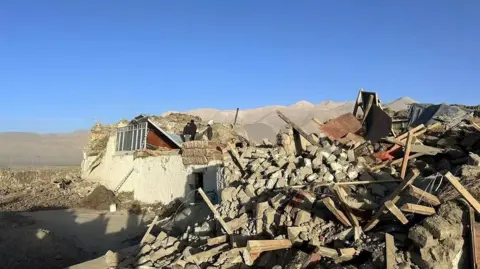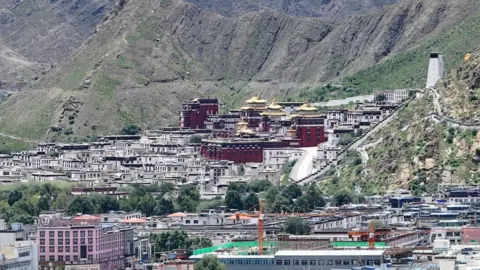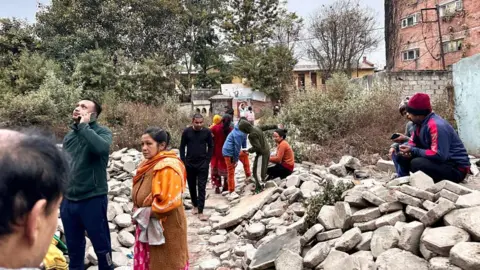Scores die in Shigatse as 7.1 earthquake hits Tibet

 Reuters
ReutersAt least 95 people have been confirmed dead and 130 injured after a massive earthquake hit the mountainous region of Tibet on Tuesday morning, Chinese state media said.
The earthquake that struck the Tibetan holy city of Shigatse at around 09:00 local time (01:00 GMT) had a magnitude of 7.1 and a depth of 10 kilometers (six miles), according to data from the US Geological Survey, which also showed a series of . of earthquakes in the area.
Tremors were also felt in neighboring Nepal and parts of India.
Earthquakes are common in the area, which lies on a major geological fault line.
Shigatse is considered one of the holiest cities in Tibet. It is the traditional seat of the Panchen Lama, an important figure in Tibetan Buddhism whose spiritual authority is second only to the Dalai Lama.
Tibetan Gedhun Choekyi Niyima identified as a reincarnated Panchen Lama disappeared in China at the age of six. China then elected its own Panchen Lama.
The current Dalai Lama fled Tibet to India in 1959 and has since been seen as an alternative source of power for Tibetans who resent Beijing’s control of the region. Many believe that China will re-elect its Dalai Lama if the current one dies.
Tuesday’s earthquake is one of China’s deadliest in recent years.
Videos published by China’s state broadcaster CCTV show collapsed houses and collapsed buildings, as rescuers wade through the rubble and hand out thick blankets to locals.
Temperatures in the Tingri region, near the epicenter, are around -8C (17.6F), and will drop to -18 this evening, according to the China Meteorological Administration.
Both power and water in the region are disrupted.
Sitting at the foot of Mount Everest, the Tingri region is a popular destination for climbers preparing to climb the world’s highest peak.
A tour of Mount Everest in Tingri, which was scheduled for Tuesday morning, has been cancelled, tourism officials told local media, adding that the observatory has been completely closed.
There were three visitors in the viewing area who were all moved to an outside area for safety, they said.
Chinese media reported the quake as having a magnitude of less than 6.8, causing “apparent” tremors and resulting in the damage of more than 1,000 houses. There were several strong aftershocks.
 Getty Images
Getty ImagesJiang Haikun, a researcher at the China Earthquake Networks Center, told CCTV that while another magnitude 5 earthquake is still possible, “the chances of a major earthquake are small”.
Since China’s occupation of Tibet in the 1950s, it has maintained tight control over the autonomous region, including its media sources and Internet access.
A resident of a hotel in Shigatse told Chinese media Fengmian News that he was woken up by the tremors. He said he took his socks and went out into the street, and saw helicopters circling overhead.
“It was as if even the bed was being lifted,” he said, adding that he immediately knew it was an earthquake because Tibet has recently experienced many small earthquakes.
 Getty Images
Getty ImagesChina’s air force has launched rescue efforts and drones in the affected area.
Chinese President Xi Jinping also called for all search and rescue efforts to minimize casualties and resettle affected residents.
While a powerful earthquake was felt in Nepal, no major damage or casualties were reported, an official at the National Emergency Operations Center told BBC Newsday – only “minor damage and cracks in houses”.
District, nearby the main fault line of the Indian and Eurasian tectonic plates, is home to frequent earthquakes. In 2015, a 7.8 magnitude earthquake near Kathmandu, the capital of Nepal, killed nearly 9,000 people and injured more than 20,000.
Tuesday morning’s tremors, which sent many residents of Kathmandu fleeing their homes, brought back memories of that deadly disaster.
“In 2015, when the earthquake hit, I couldn’t even move,” Manju Neupane, a shop owner in Kathmandu, told BBC Nepali. “Today the situation was not that scary. But, I am afraid that there might be a big earthquake and we will be trapped between tall buildings.”
Source link




